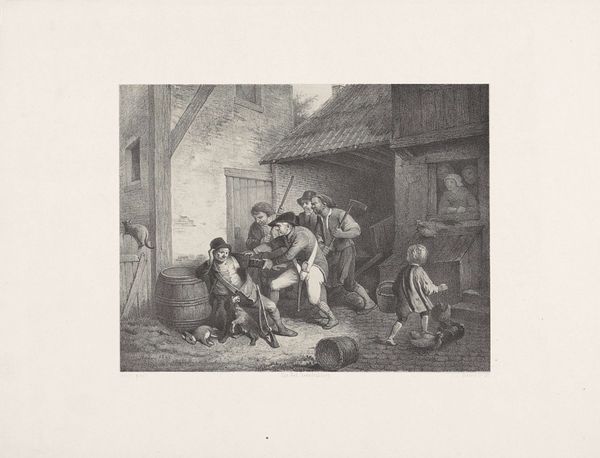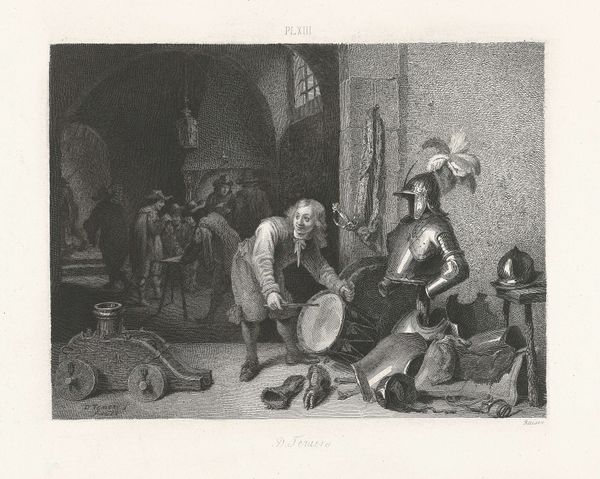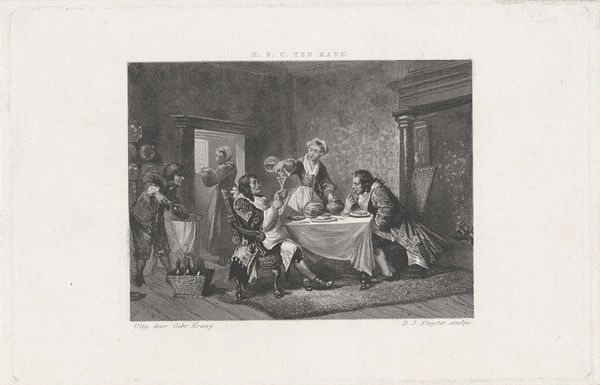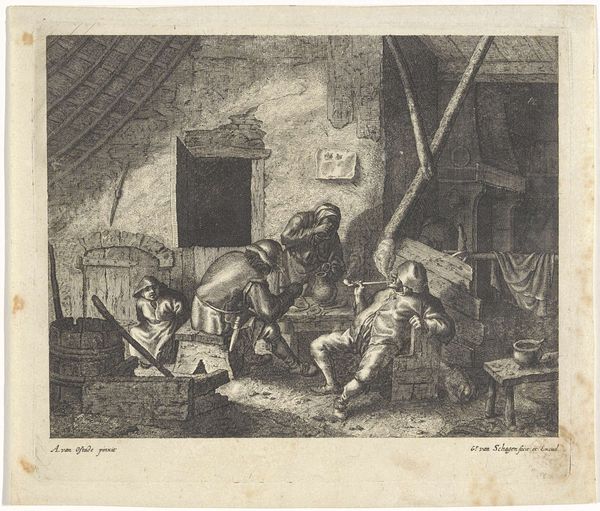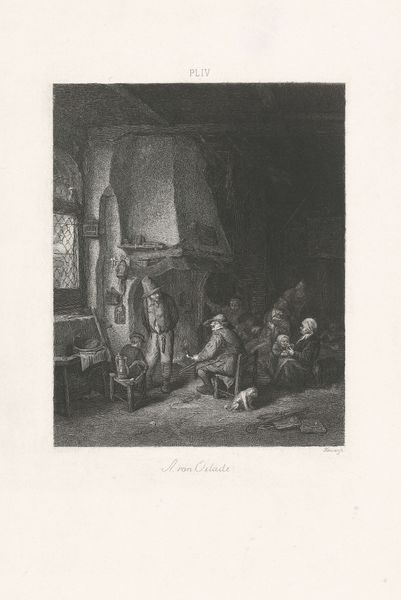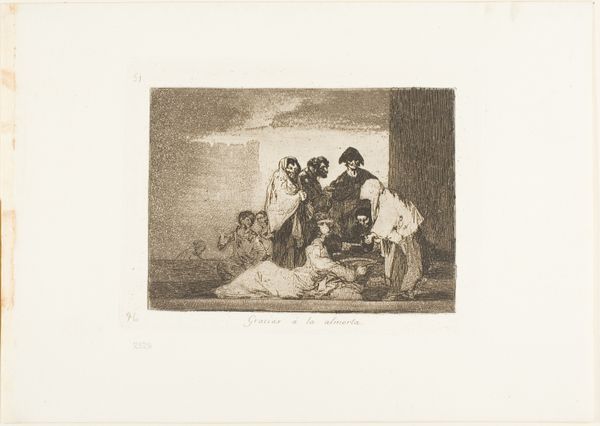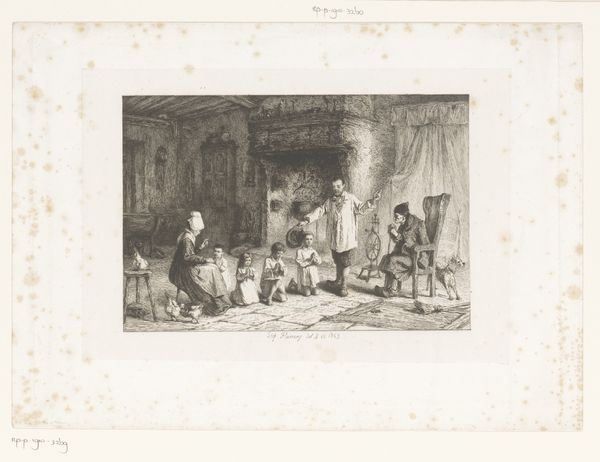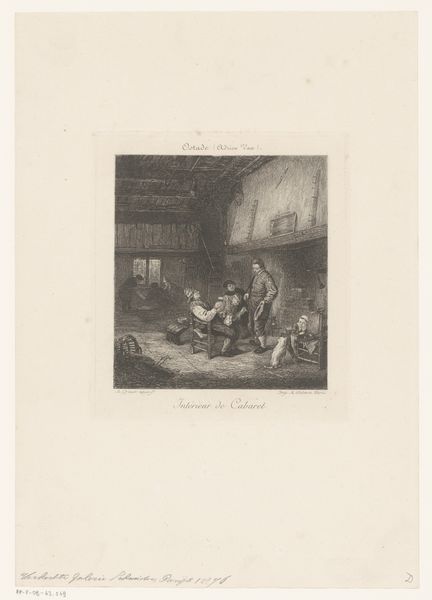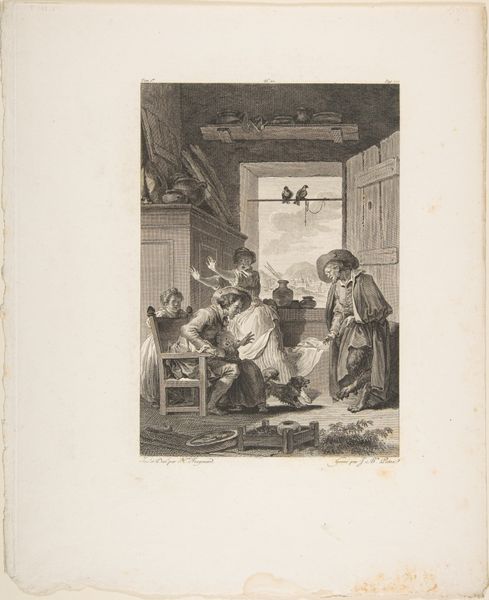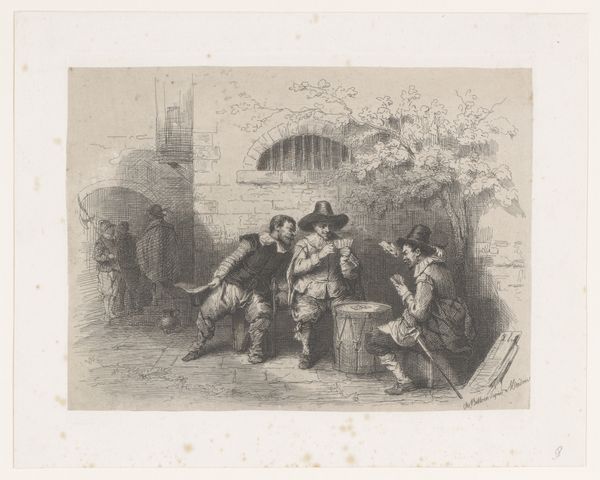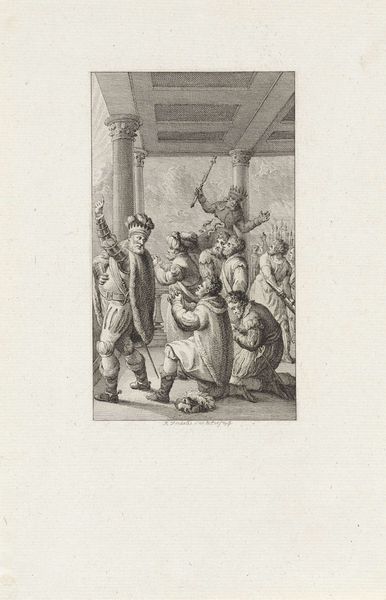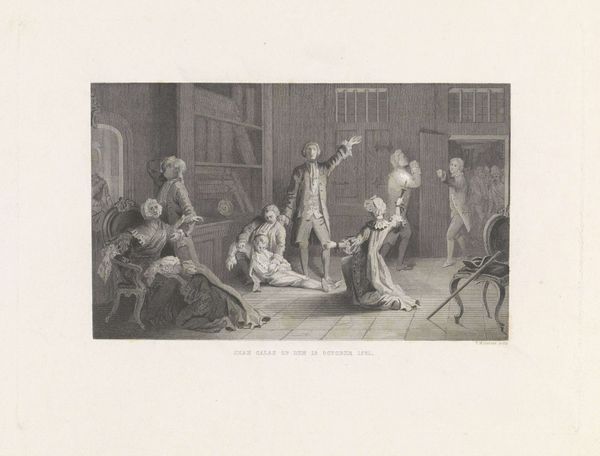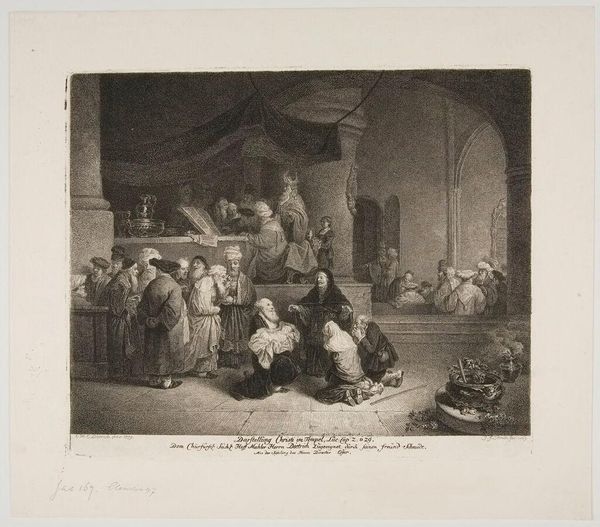
Dimensions: height 120 mm, width 172 mm
Copyright: Rijks Museum: Open Domain
Editor: Here we have Johann Wilhelm Kaiser's "Family in a Room", created in 1857. It's an engraving, and it depicts a domestic scene. The details in this interior scene are remarkable! What stands out to you when you look at this piece? Curator: I’m immediately drawn to the textures achieved through the engraving process itself. Consider the labor involved in creating these minute lines. What does that say about the intended audience and their relationship to both art and artisanal work? Think about the social hierarchy implied – who has the time and money to commission and appreciate such detailed work, and who is producing it? Editor: That's a good point, I hadn't considered the labor aspect so directly. So, you're saying the very process of engraving highlights class differences in a way? Curator: Precisely. And observe the interior. It's not just a snapshot of a room; it’s a constructed image intended for consumption. Consider the contrast between the romantic depiction of the family and the humble materials of their surroundings. Is this realism or is it carefully constructed sentimentality packaged for a specific market? How might mass production through printmaking further shape or even distort the narrative? Editor: I see what you mean! The print medium makes it more accessible, potentially influencing social perceptions. But is the print itself a commentary, or is it reinforcing these class differences? Curator: Perhaps it's both. The materials used – the paper, the ink, the metal plate – and the techniques of production become tools to both reflect and shape social narratives. How does the relative affordability of a print compared to, say, an oil painting, democratize art, and what compromises might come with that democratization? Editor: This has given me so much to consider about the artist's decisions regarding materials and audience! I’ll definitely be looking at engravings with fresh eyes from now on. Curator: And I've learned to more deeply question the narrative being presented and consider the choices made in production in shaping meaning! Thanks for this enriching chat.
Comments
No comments
Be the first to comment and join the conversation on the ultimate creative platform.
